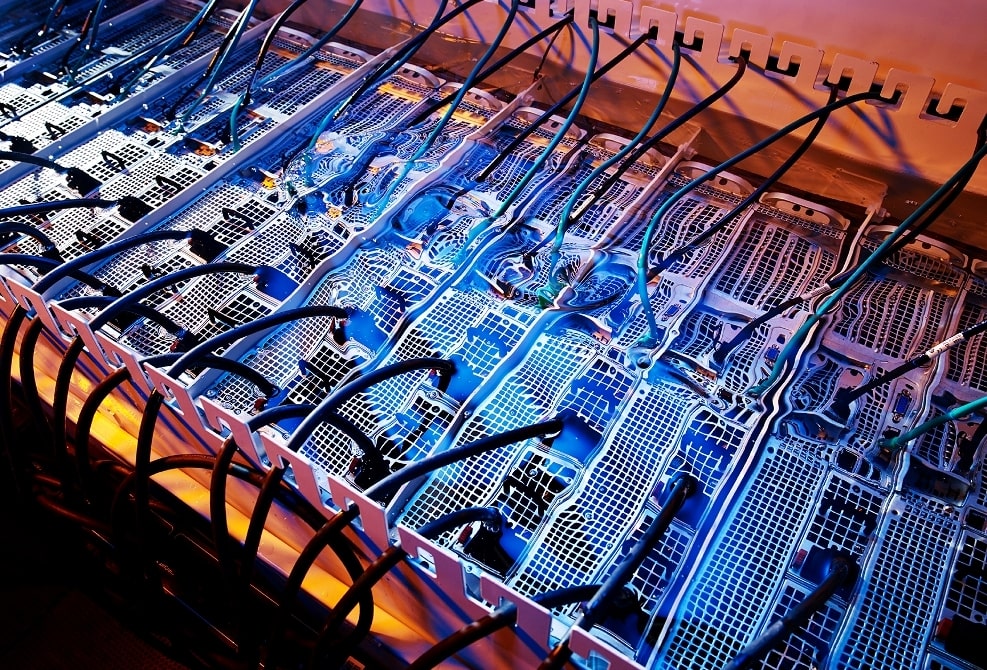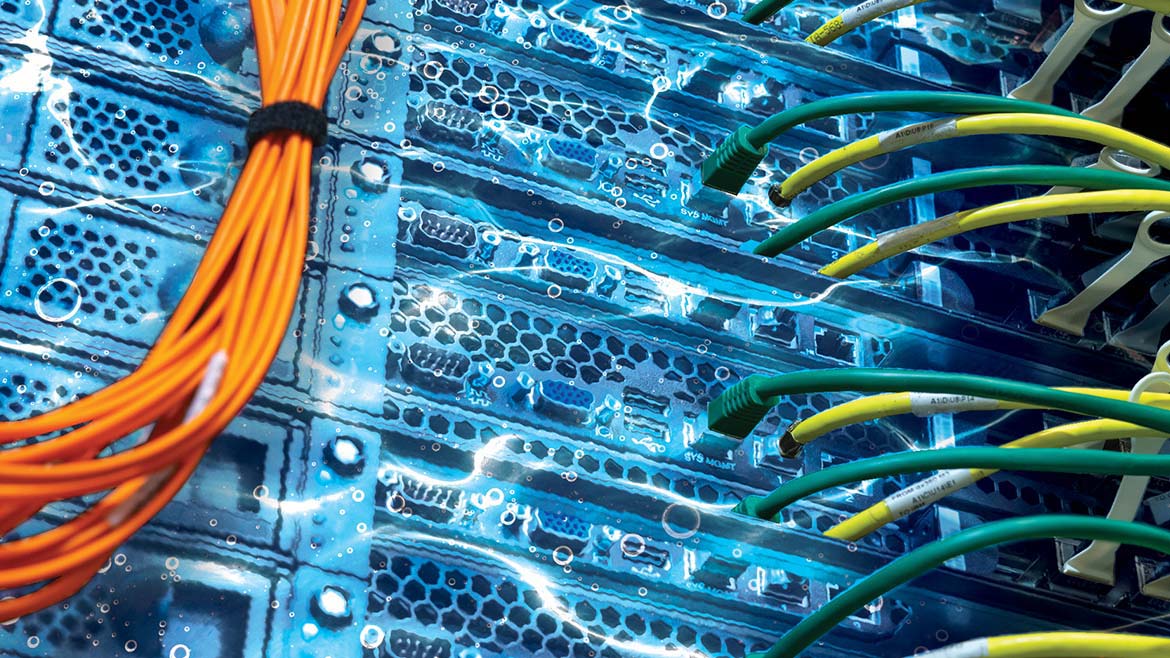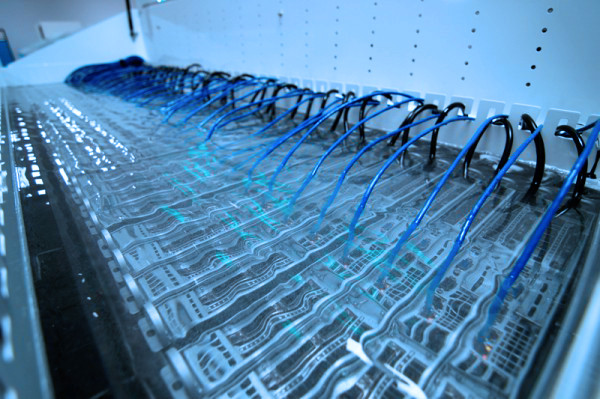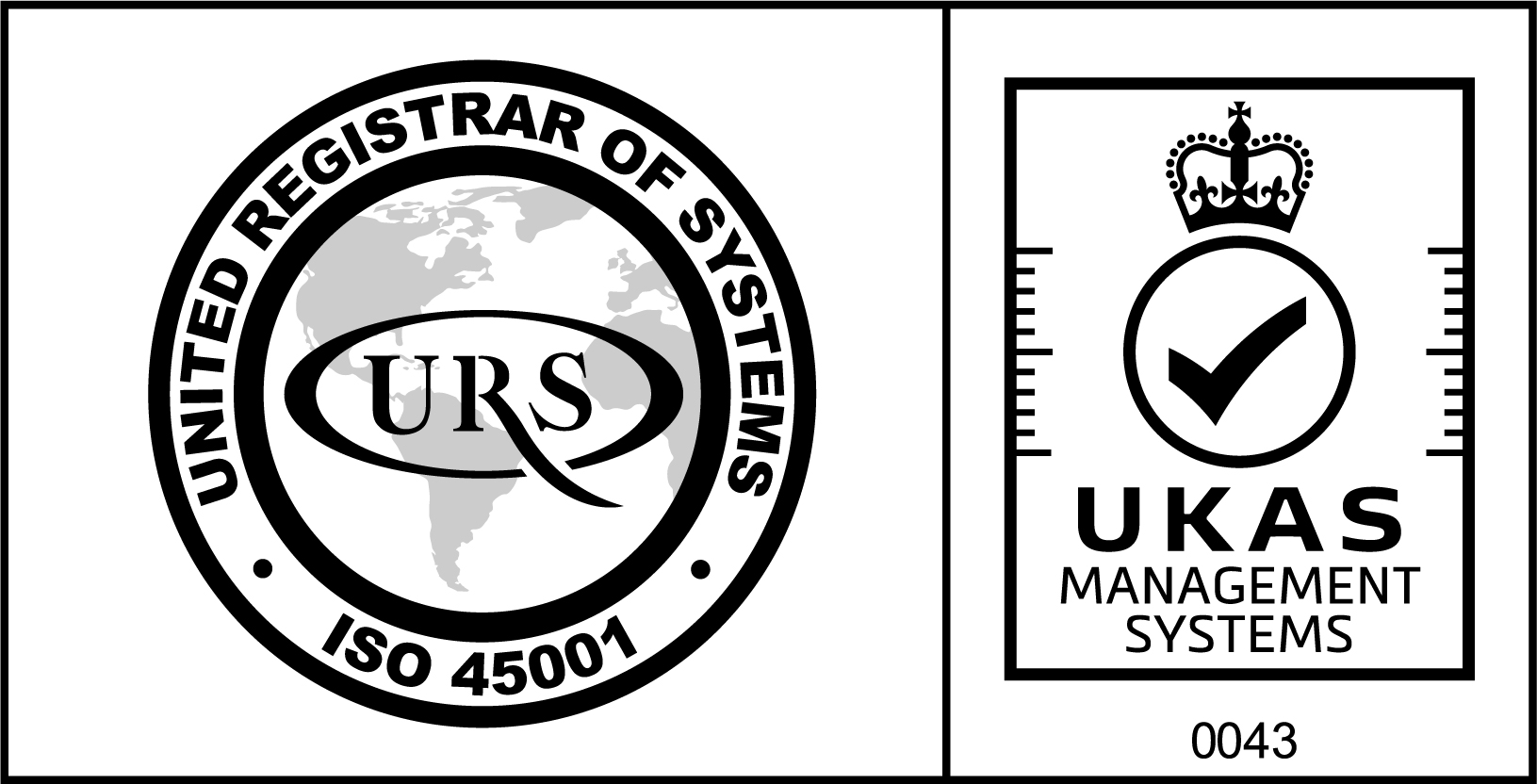Home / Immersion Cooling
What is immersion cooling?
Immersion cooling is a highly efficient cooling solution that involves submerging servers in a non-conductive fluid. This fluid absorbs the heat generated by the servers, allowing for highly efficient cooling. Immersion cooling and liquid cooling system for data center can significantly reduce energy consumption and operating costs, while also improving cooling capacity and IT reliability.
Immersion cooling is a unique technology based on natural convection, achieved through the circulation of a dielectric liquid. Common technological forms include single-phase and two-phase immersion cooling, both of which have their respective advantages in heat exchange efficiency and system design. Single-phase immersion cooling systems completely immerse IT equipment in a hydrocarbon fluid, ensuring all heat generated by the equipment is absorbed by the liquid. On the other hand, two-phase immersion cooling systems utilize the principle of boiling cooling, dissipating heat from components through the phase change of the dielectric fluid. The principles and features of both systems will be detailed in the following section.
This ground-breaking cooling system for data centers is the ultimate solution to the growing demand for sustainable high-density and energy efficient data centers. The first of this cooling system for data centers is in Hong Kong, the new solution significantly reduces data center energy consumption and provides more reliable performance. It marks a groundbreaking shift for a heavy energy-consuming industry towards a greener future by adopting innovative, sustainable technologies and practices. By transitioning to Immersion Cooling, data centers will be future ready while managing costs and the impact on our environment. The industry will then enter what would otherwise be impossible — a new era of data centers.
Features of Single-Phase Immersion Cooling
Single-phase immersion cooling is an efficient thermal management technology, particularly suitable for data centers and high-performance computing equipment. The characteristic feature of single-phase immersion cooling lies in directly immersing servers or electronic devices in a dielectric coolant with good thermal conductivity and insulating properties. In single-phase immersion cooling, the liquid absorbs the heat generated by the equipment, and this heat energy is then conducted to a heat rejection system for dissipation, achieving stable and uniform cooling effects. This technology can significantly reduce the energy consumption of fans and air conditioning, improve energy efficiency, and simultaneously reduce noise and equipment wear and tear, making it an ideal choice for achieving sustainable and high-density deployments.
Characteristics of Two-Phase Immersion Cooling
Two-phase immersion cooling is an advanced thermal management technology that achieves efficient heat dissipation by immersing electronic devices in a dielectric liquid with a low boiling point. When the equipment operates and generates heat, the coolant absorbs the heat and boils, entering a vaporization phase that carries away a large amount of heat. Subsequently, it condenses back into a liquid and is recirculated for use. Two-phase immersion cooling is characterized by high heat exchange efficiency, good energy-saving effects, and quiet system operation, making it particularly suitable for high-density servers and edge computing environments. This technology can not only significantly reduce PUE (Power Usage Effectiveness) but also help to extend equipment lifespan, supporting green sustainable development.

Why is immersion cooling important for data centers?
The energy consumption of a data center is a significant resource that should not be overlooked. IT equipment consumes most of the energy resources, with the power consumption through the servers being dissipated as heat.
In recent years, advances in AI, IoT and machine learning, combined with increased computing power and performance requirements, have led to a higher server rack density – a particularly dire problem with Hong Kong’s land constraints. The result has been an upsurge in heat generated by traditional data centers, with cooling systems for data center correspondingly consuming significantly more energy at greater cost.
By contrast, immersion cooling solutions are widely recognized as a cooling system for data centers for their reliability and energy and cost efficiency. They are also conveniently scalable to any size of data center.
Immersion cooling is an innovative cooling solution that brings significant advantages over traditional air-cooling techniques, especially when applied to high-density environments such as data centers. For facilities that feature extremely high-density racks (typically over 30 kW), air cooling simply is not sufficient to maintain the reliability of IT systems, no matter how new or optimized they may be. For such facilities (rack power requirements are approaching close to 20 kW in many facilities, and many organizations are looking to deploy racks with requirements of 50kW or more), liquid cooling is not a choice, but a necessity.
With immersion cooling, the rack is designed specifically so that servers are inserted vertically. An immersion tank houses the servers in a dielectric bath, and utilizing a CDU, circulates cooling fluid to remove heat.
What is direct liquid cooling?
Direct liquid cooling (DLC) is an advanced thermal management method that uses fluids, such as water or dielectric coolants, to remove heat more efficiently than traditional air-based systems. DLC uses cold plates, which are metal blocks with internal channels, mounted directly onto high-heat components like CPUs and GPUs. A coolant is pumped through a closed loop of tubes to these plates, where it absorbs heat directly from the chips. The heated liquid is then circulated away to a heat exchanger to be cooled before returning to the components.
Due to the much higher thermal conductivity of liquids, direct liquid cooling enables faster and more direct heat transfer from high-power components like CPUs, GPUs, and memory modules. As data processing demands increase with workloads such as AI, machine learning, and 3D rendering, air cooling is often insufficient to maintain performance and prevent thermal throttling.
How does immersion cooling differ from direct liquid cooling?
Immersion cooling and direct liquid cooling (DLC) are both advanced liquid cooling and thermal management methods, but they differ significantly in approach. In immersion cooling, entire servers or components are fully submerged in a non-conductive liquid, allowing heat to dissipate directly into the fluid from all surfaces. This method provides excellent thermal efficiency and is ideal for high-density, high-performance environments.
In contrast, DLC targets specific components such as CPUs and GPUs—using cold plates through which a coolant circulates. While DLC is more focused and easier to integrate into existing infrastructure, immersion cooling offers broader heat removal capabilities and often greater energy efficiency. The key distinction lies in the scope of cooling: immersion cools the entire system, while DLC cools only designated components.
How can direct liquid cooling help data centers?
As a form of liquid cooling, DLC offers several key advantages. It enables higher rack densities, supporting power loads exceeding 50 kW per rack while maintaining thermal stability and system performance. It also significantly improves energy efficiency by reducing reliance on fans and HVAC systems, leading to improved Power Usage Effectiveness (PUE) and lower operational costs.
Direct liquid cooling allows data centers to eliminate bulky infrastructure like raised floors and complex air ducts, enabling more compact, flexible designs. By keeping components at optimal temperatures, DLC also reduces the risk of overheating and prolongs equipment lifespan.
With the rise of AI and HPC workloads, liquid cooling technologies like direct liquid cooling are becoming essential for data centers seeking to scale efficiently while minimizing energy use and environmental impact.
Leading the Future of AI Cooling: A Key Project by Newtech Powers Hong Kong’s Liquid Cooling Breakthrough
As artificial intelligence (AI) workloads grow exponentially, the demand for advanced, energy-efficient cooling solutions is becoming more urgent than ever. As an industry innovator, Newtech played a key role in enabling the Hong Kong University of Science and Technology (HKUST) to deploy the city’s largest liquid immersion cooling system, a major milestone in building a sustainable computing infrastructure in Hong Kong.
Where Is the Largest Liquid Cooling System in Hong Kong?
This landmark project, currently the most extensive immersion cooling deployment in the city, was led by HKUST with technical support and system integration provided by Newtech. The system features eight immersion tanks supporting approximately 280 CPU/GPU servers, purpose-built for high-performance AI and scientific computing. It reduces cooling power consumption by over 80%, maintains a PUE of under 1.1, and is expected to save more than HK$3 million annually in energy costs, while cutting around 900 tons of carbon emissions each year.
HKUST plans to expand this technology further with the completion of a new eight-story high-performance data center in 2026, paving the way for a globally competitive AI computing platform in Hong Kong.
How Newtech Drives Innovation in Immersion Cooling
As the system provider and technical partner for this project, Newtech played a central role in turning immersion cooling from a concept into reality. From design and infrastructure layout to construction and testing, Newtech supported HKUST in overcoming the thermal challenges of high-density AI workloads, ensuring optimal system performance and maximizing energy efficiency.
Challenges for Immersion Cooling Adoption
The current challenge for immersion cooling adoption can be attributed to several factors, including:
Infrastructure Design
Immersion cooling system requires a different infrastructure design compared to traditional air-cooled data centers. This means that retrofitting existing data centers to accommodate immersion cooling may not be feasible or may require significant modifications.
Customization
Immersion cooling solutions are often highly customized and tailored to specific hardware configurations. This means that integrating new hardware into an existing immersion cooling solution can be challenging.
Limited Availability
Immersion cooling technology is still relatively new, and there are a limited number of vendors that provide immersion cooling solutions. This can make it difficult for organizations to find the right solution for their needs.
Maintenance and Support
Immersion cooling solutions require specialized maintenance and support, which can be more complex than traditional air-cooled solutions.


How does Newtech's immersion cooling solution work?
At Newtech, we offer a cutting-edge immersion cooling solution that is designed to provide highly efficient and reliable cooling for data centers of all sizes. The process works as follows:
1. Submersion of IT Equipment
In an immersion cooling data center, servers are fully submerged in a non-conductive, dielectric fluid. Unlike traditional air cooling, this fluid directly contacts the hardware, preventing overheating without the risk of electrical damage. The immersion cooling data center approach ensures more effective heat dissipation, especially in high-density environments.
2. Heat Absorption by the Fluid
The dielectric fluid absorbs the heat generated by the hardware during operation. As the fluid has a much higher thermal conductivity than air, it enables more effective heat absorption than traditional air methods.
3. Circulation of Cooling Fluid
The heated fluid is continuously circulated out of the immersion tank to ensure the removal of heat. The fluid flows to the next stage, where the heat is transferred for dissipation, ensuring uninterrupted cooling performance.
4. Heat Transfer via Heat Exchanger
The heat absorbed by the fluid is passed through a heat exchanger to a secondary cooling system. This secondary system can dissipate the heat into the environment or repurpose it for secondary applications.
5. Fluid Re-Circulation
Once cooled, the dielectric fluid is pumped back into the immersion tank, where it circulates again to absorb more heat from the servers. This closed-loop process ensures efficient, consistent cooling without the need for large, energy-intensive air conditioning units.
6. Monitoring and Optimization
Newtech integrates Data Center Infrastructure Management (DCIM) software to monitor real-time system performance, optimizing energy use and cooling efficiency.
By leveraging our expertise in digital infrastructure, Newtech’s immersion cooling solution contributes to sustainability. It reduces overall energy consumption and enables the use of renewable energy sources, making it a future-ready solution for digital infrastructure.

Benefits of using Newtech Immersion Cooling System for Data Centers
As well as scalability, immersion cooling systems for data centers also offer a quieter working environment. Other key benefits include:
Improved reliability and performance
Up to 10x increase in computing density when comparing to air-cooled data centers. It is also more reliable, as the server is now sealed in a unit and unaffected by vibration, humidity, or airborne dust particles.
Improved energy efficiency
Liquid cooling has higher thermal transfer properties than air. It also reduces server energy use significantly as no fans are required within the rack – no water consumption and no fan energy used result in a 45% lower carbon footprint than that of air-cooled data centers, and a PUE of 1.09 or lower anywhere.
Sustainability
Liquid cooling provides a more effective way to repurpose captured heat, as liquid-to-liquid heat transfer is more efficient than what is possible with air-based cooling systems. As a result, a large portion of energy is ready for reuse, creating the possibility of energy neutrality by supplying heat.
Maximizing cost efficiency
It maximizes data center space by reducing its physical footprint by 40%. It also decreases cooling infrastructure CAPEX and OPEX by around 50% and 85% respectively.
Frequently Asked Question
1. What is liquid cooling, and how does it work?
This method enhances performance, lowers energy consumption, and boosts reliability, making a data center well-suited for managing modern high-density and high-power computing demands.
2. What is the difference between single-phase and two-phase immersion cooling?
3. What is the current challenge for immersion cooling data center adoption?
4. What is the difference between immersion cooling & liquid cooling?
Liquid cooling, typically refers to direct-to-chip cooling, uses a cooling liquid that circulates through tubes attached directly to key components to remove heat. Both methods use liquid to cool, but the approach and contact with hardware differ.








